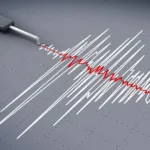Studying Salt Crystals to Decode Earth’s Past
Scientists have delved into the Earth’s past 150 million years by studying tiny water pockets within salt crystals. These crystals, formed from ancient seawater, can reveal the history of movements on the ocean floor and shed light on atmospheric conditions over time.
Researchers, including Mebrahtu Weldeghebriel from Princeton University and Binghamton University, along with Tim Lowenstein from Binghamton University, analyzed lithium levels in marine halite (sea salt). This analysis allowed them to reconstruct tectonic activity on the ocean floor, revealing its significant link to atmospheric changes.
Ocean water is more than just salt – it contains various minerals that reflect different processes occurring at different times. Marine halite might seem dry, but it holds small pockets of water from its formation, effectively preserving a snapshot of the ocean’s chemistry from that era.
The scientists collected halite samples from different parts of the world, dating back 150 million years. Using a laser drill, they extracted water from the samples, analyzing 639 water pockets within 65 salt crystals. These water droplets gave insights into the history of hydrothermal activity. This process involves the release of heat and chemicals into the ocean from Earth’s tectonic plate boundaries
The findings showcased a seven-fold decrease in lithium concentration spanning the last 150 million years. This decline was coupled with a rise in magnesium-to-calcium ratios. This drop was due to decreased tectonic plate movement and crust production, resulting in reduced hydrothermal activity. This reduction in geological activity also caused a decrease in the release of carbon dioxide into the atmosphere. This could have contributed to the cooling that triggered the last ice age spanning from 115,000 to 11,700 years ago.
Interconnected Earth Systems
This study builds upon earlier research by the same team that showed strontium ratios in ancient seawater also indicated a decline in hydrothermal activity during the same timeframe.
Ultimately, this analysis highlights the interconnectivity of Earth’s systems and the role of plate tectonics in shaping the planet’s hydrosphere and atmosphere. According to Tim Lowenstein, “The oceans and atmosphere have a connection, and changes in one influence the other. Everything is intertwined.”
The research has been published in Science Advances.






